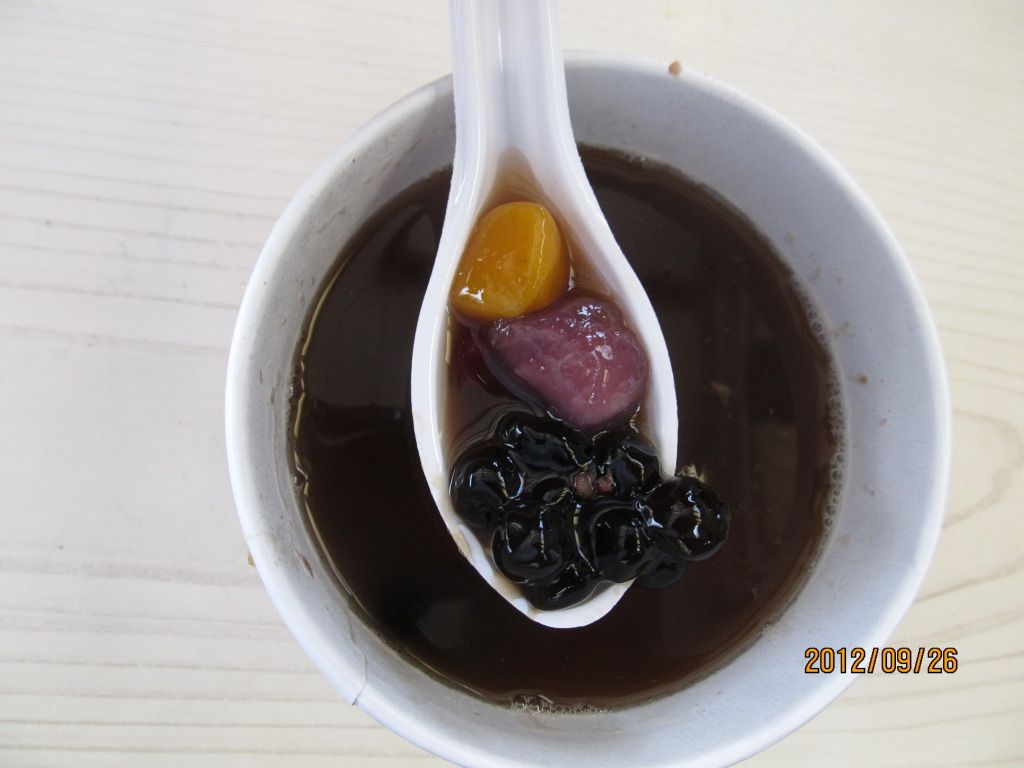Kinwashi Tour Japan Thread
-
Look for the blue colour ones.
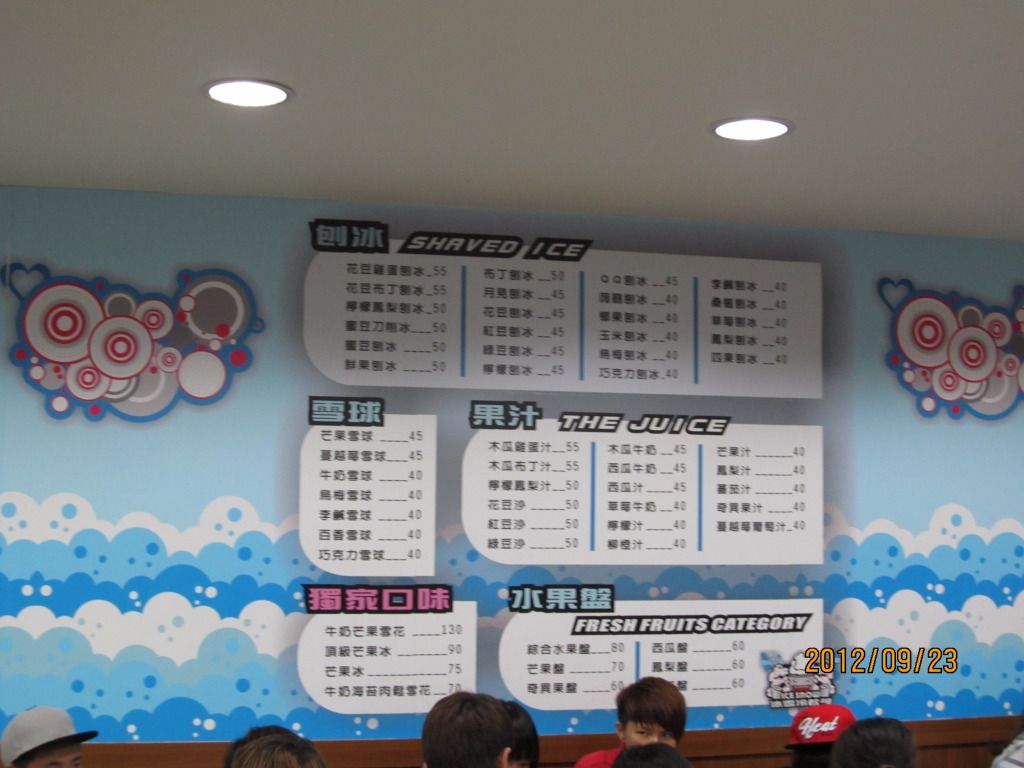
-
Dinner also can consider here.
If you dislike roadside stalls.
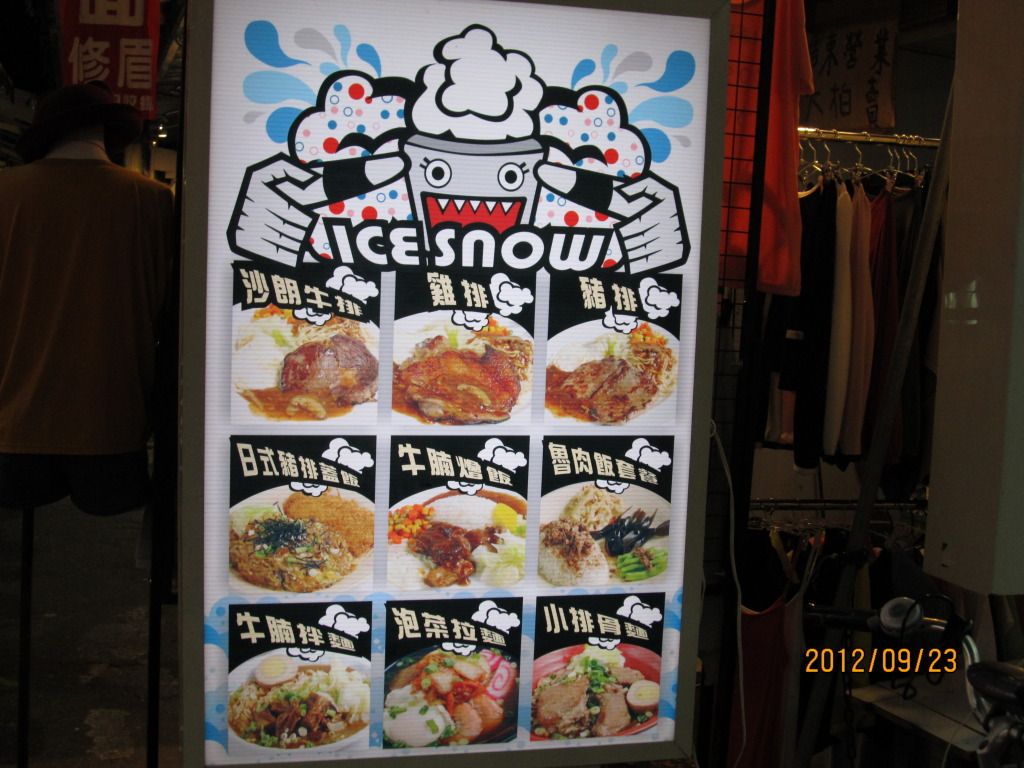
-
Some say this is good, some say that is good,
I, personally said peanut is the best,
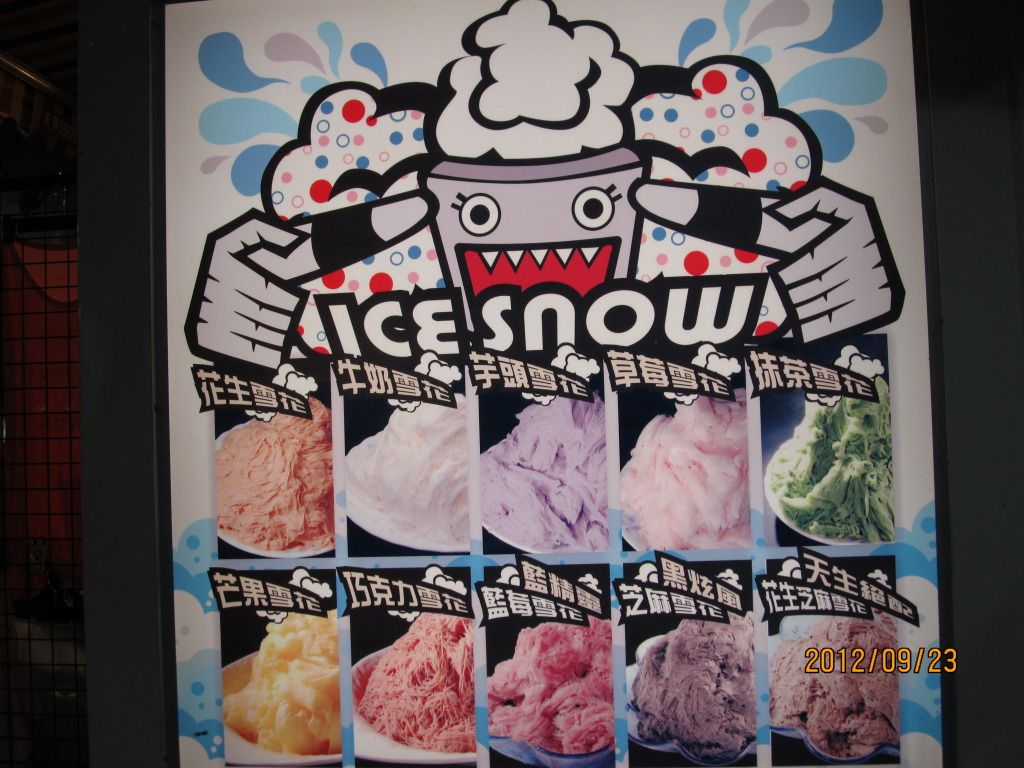
-
Wow...$50 dollar for this?
Aiya Taiwan
exchange rate 23.55. so 50 taiwan dollars.
nothing lah.
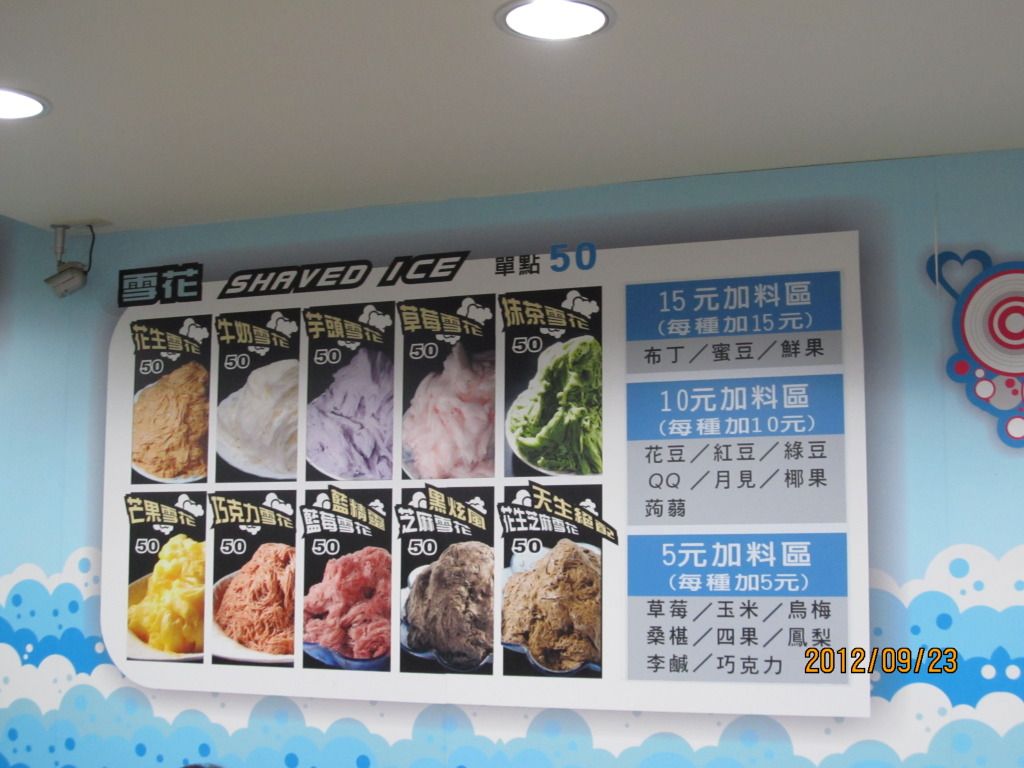
-
There are also others, but we never try.

-
Another unique dessert found only in Jiufen, taro balls in sweet soup. Every bowl comes with a variety of taro ball flavours and you have the option of hot or chilled. Very nice texture and delicious. NT$50 a bowl. This is possibly the most famous food in Jiufen, and Grandma Lai is the most popular shop selling it.
source.
-
O ...what is this?
From Taiwan.
-
Hangling GOLD from natural plant?
Click to enlarge, better view.
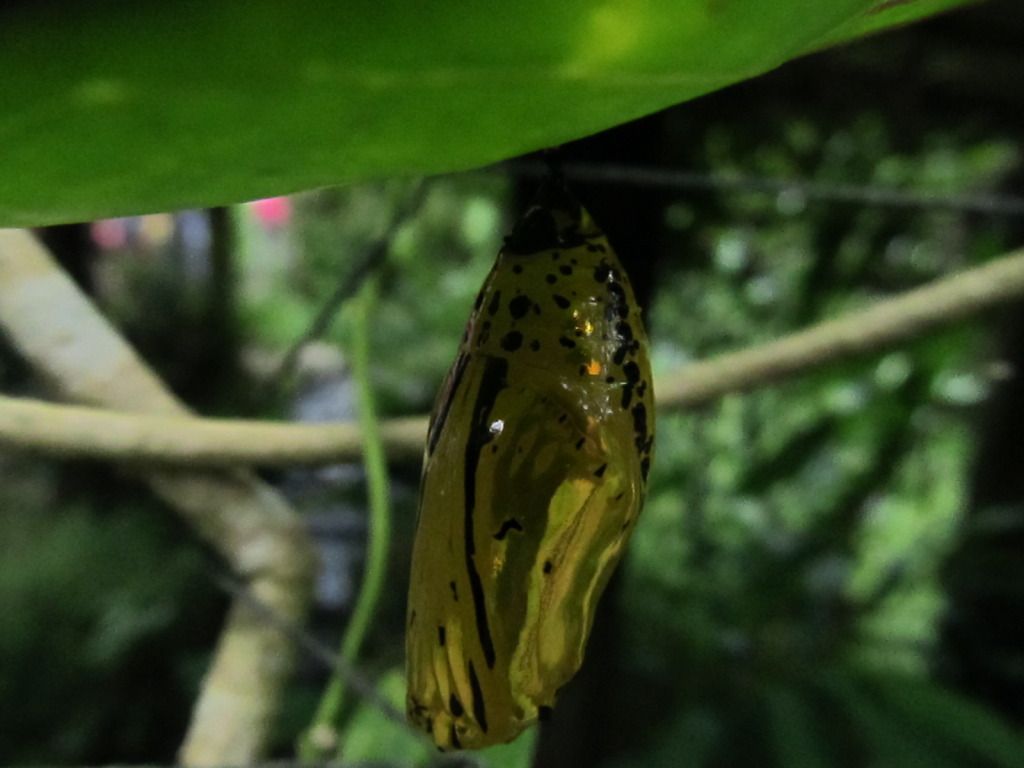
-
GOLD everywhere.
Hangling all around.

-
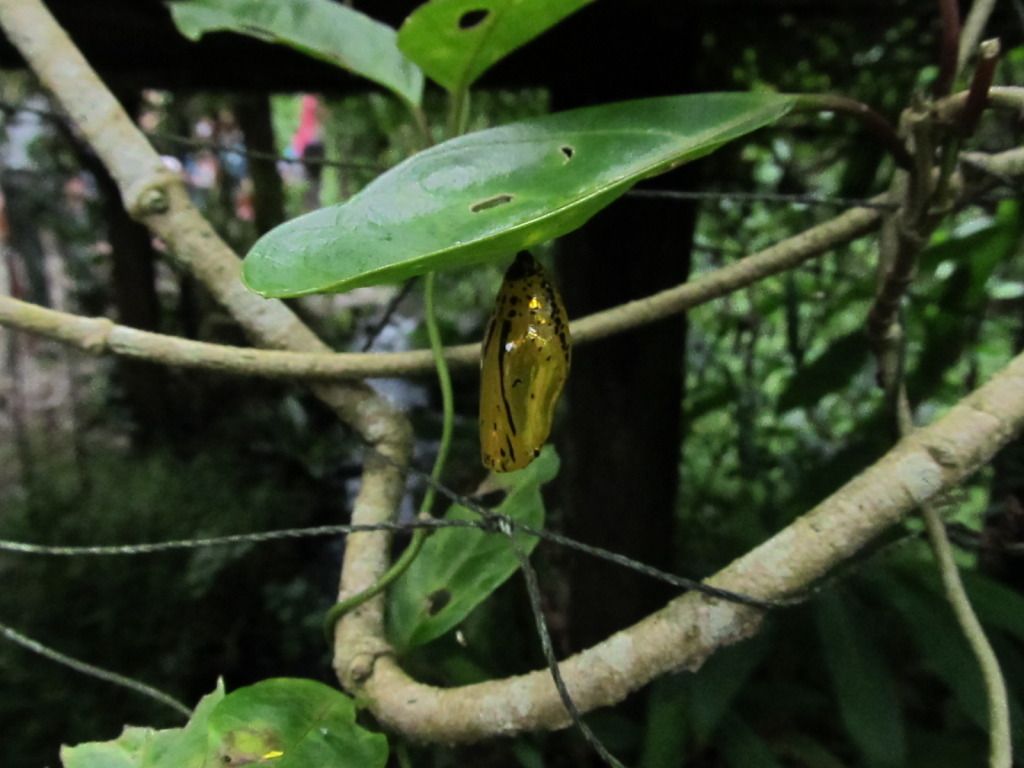
-
Where to park your car in Kagoshima town...

-
No probelm and yet so simple,
what valet parking, what coupon parking,
looking high and low over here.
Just let than do the parking, before.
And you just wait for your car to come down when you are ready to go,
as like the picture the lady is waiting for her car to arrive from the lift.
what CBD parking here and there, probelm looking for a space.

-
What parking summon, what wanden with digital camera and summon ticket devices.
if coupon are expired, alway needed to remember what is the time. over here.
come to Kagoshima with this automatic hydraulic devices, drive to the parking lot,
it will lifted up you car, meaning you parked and you needed to pay.
if you decided to go, just pay onto the machine, it automatically lower down the hydraulic devices and you go.
-
-
-
-
SINGAPORE BUY THIS LAH.
Just to avoid another BUGIS senerio.
RED stop but also chiong, AMBER also chiong, GREEN also chiong.
What traffic lights, see in Taiwan as an example, chiong or not to chiong,
Countdown Timers is there just to tell you how many second to chiong.
Even Malacca also got. Why you don't have.
Countdown Timers. traffic lights.
-
Chiong or not to chiong.
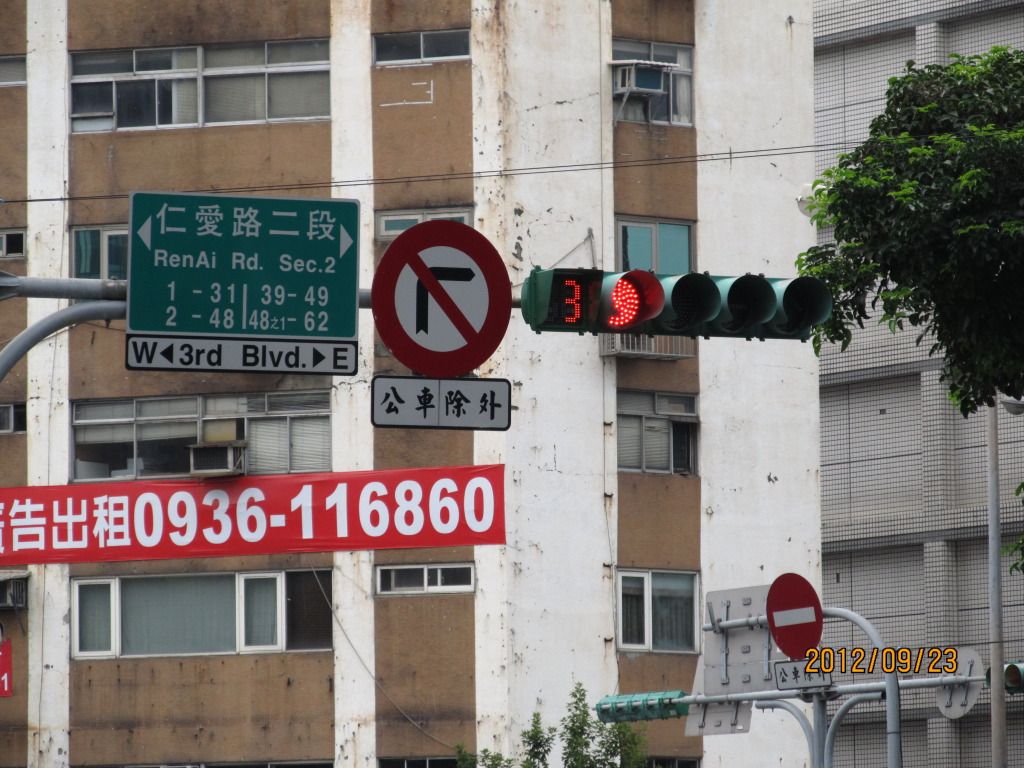
-
Singapore, learn from someone with good ideals...lah.
Just don't any how make money, issue unnecessary summons.
Alway told us must pratice good habit, your traffic lights are horrible.
Count your own timing when approching the three white arrow on the road when reaching the traffic light.
No wonder chiongsters alway got into troubles, and more funds are adding everyday..
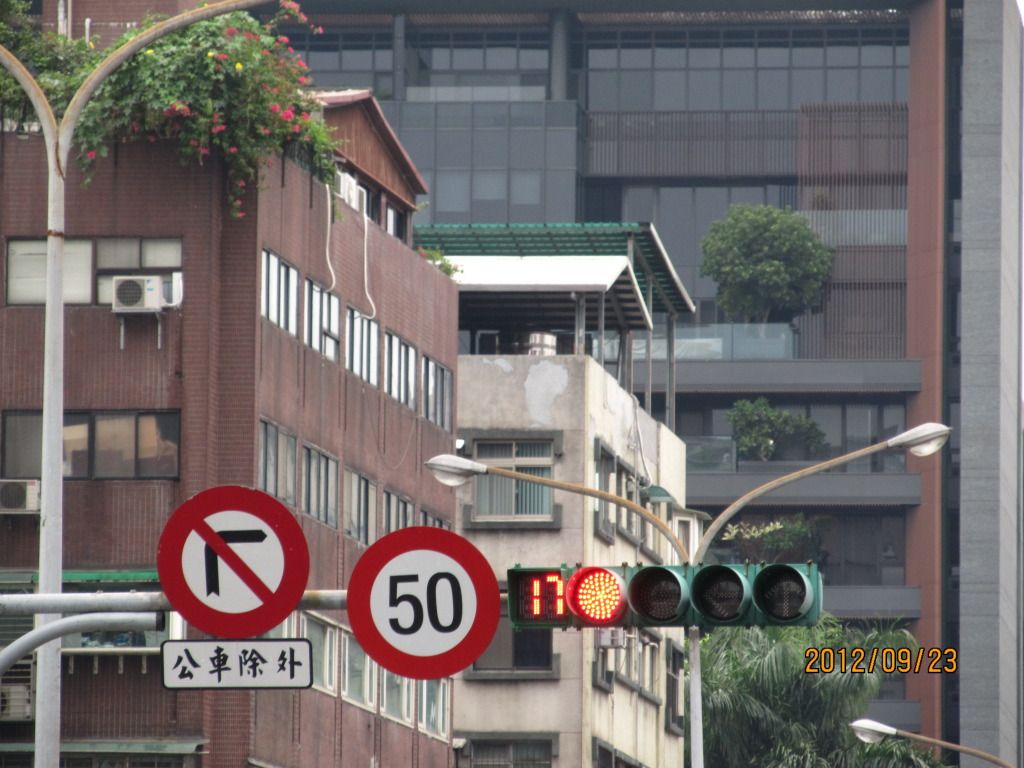
-
-
Some local tour agencies from here,
recently their tour packages to Kagoshima,
They will bring you to this tourist spot.
SENGAN-en
-
SENGAN-en.
http://www.senganen.jp/en/senganen/index.html
 Formal Name
Formal NameSengan-en Tsuketari
KekuraokariyateienYear of Completion1658 Area50,000m2 Designation as Scenic BeautyMay 15,1958 â—†Garden making use of the surrounding landscape: likened Sakurajima to its own mountain, Kinko Bay to the pond
Sengan-en was built by Mitsuhisa, the 19th head of the Shimadzu family in the early Edo period, and its name was given after Xian Yan in lung hau shan of China. ( Xian Yan in Chinese characters is pronounced "Sengan" in Japanese.)
This daimyo's garden fascinates not only local people but also tourists from home and abroad with its beauties of four seasons and also the spectacular view making use of Sakurajima as its background mountain and Kinko Bay as inside pond.
â—†Japanese garden harmonized with Chinese culture
Satsuma was a south door of Japan. The Shimadzus governing there was aggressive to receive things Chinese via Ryukyu Kingdom, and, as a result, influenced by the Chinese culture. Under such environment, Chinese gardening methods was applied in many places of Sengan-en though it was actually Japanese garden, so it shows unique harmonized beauty.
They say that Bogakuro Pavilion, a Chinese style building, presented by a Ryukyu king, was used when feudal lords of Satsuma entertained missions from Ryukyu Kingdom. The floor was copied from the tile-made floor of Epang Palace in the beginning of Qing Dynasty, and the handwriting in the frame from that of Wang Xizhi at the time of Jin Dynasty in the 4th century. Chinese characters "�尋巌" were curved on the rock in the hill behind the house.
These curved characters were often seen in Chinese style gardens. The backyard has Kyokusui Garden where Kyokusui banquets, originated from the purification ceremony in China, used to be conducted. In further back, there is Konan Chikurin(Bamboo Grove) where imported Phyllostachys edulises or Moso Bamboos form China were planted in the middle of Edo Era. This Moso
Bamboo spread all over Japan from this garden. It is said that they made Kyokusui Garden and Konan Chikurin, highly motivated by Lanting or the Orchid Pavilion which was a villa of Wang Xizhi located in Lanzhu, Shaoxing City, Zhejiang Province of China. Thus, the influence of Chinese culture can be seen in many parts of Sengan-en.



Bogakuro Pavilion Senjingan Kyokusui Garden Konan Chikurin
(Bamboo Grove) -
â—†History
Sengan-en was used as a villa of successive heads in Edo Era and as a residence of Duke IsoShimadzu from Meiji Era.
The original garden Hisamitsu Shimadzu, the 19th head, designated Oisoshimotsuhama-kadoyashiki, the former residence of Senior Retainer Masachika Kamata, as his own site, built Okariya or a mansion, and named it Sengan-en in 1658. He built a bower in the south of the site in 1672, and held a banquet to celebrate the completion in the following year. During the banquet, two cranes landed on the garden. They believed it was a good omen, so called the bower Kikakutei which meant a joyful crane's bower.
Hisamitsu Shimadzu, the 19th head, designated Oisoshimotsuhama-kadoyashiki, the former residence of Senior Retainer Masachika Kamata, as his own site, built Okariya or a mansion, and named it Sengan-en in 1658. He built a bower in the south of the site in 1672, and held a banquet to celebrate the completion in the following year. During the banquet, two cranes landed on the garden. They believed it was a good omen, so called the bower Kikakutei which meant a joyful crane's bower.
It is said that Tin Gate and Bogakuro Pavilion were also built in his time. There must have been posts for maintenance of the garden because post names such as Isookariyamori or Isookariya Guard and Iso Bugyo or Iso Magistrate were found in old documents.



Tin Gate Garden making use of the surrounding landscape Bogakuro Pavilion Governing time after the construction of the garden
Yoshitaka Shimadzu, the 21st head, transferred his position to his son, Tsugutoyo, the 22nd head, in 1721, and spent his retired life in Sengan-en. But, since Tsugutoyo was necessitated to stay in Edo for long time because of his poor health, Yoshitaka had to assist him in governing the homeland, Satsuma. So Sengan-en where he used to stay became the center of the politics, and some kinds of maintenance were done. For the maintenance of roads between Sengan-en and Kagoshima Castle, the road along the sea, the former Isokaido, was extended.
For stable water supply to Sengan-en, 8 kilometer irrigation was newly built.
It is called Yoshino Sosui. And it is said that Kyokusui Garden was made in the time of Yoshitaka. In 1736, Konan Bamboo or Moso Bamboo was imported and planted in Konan Chikurin(Bamboo Grove). It is guessed that this planting followed the gardening of Kyokusui Garden.


Yoshino Canal Konan Chikurin(Bamboo Grove) Kyokusui Garden 
 Shigehide Shimadzu, the 25th head, selected the most beautiful scenes inside and outside of Sengan-en, made artists draw them and bound as "16 beautiful scenes of Sengan". He also asked a Chinese to write poems and a preface.
Shigehide Shimadzu, the 25th head, selected the most beautiful scenes inside and outside of Sengan-en, made artists draw them and bound as "16 beautiful scenes of Sengan". He also asked a Chinese to write poems and a preface.
He cleared the mountain behind the house, and built Kansuisha pavilion to enjoy the waterfall scene in the backyard in 1799, and also built a house 'Shusen-dai pavilion' on the top of the mountain there to enjoy views and coolness in 1814. Out of 16 beautiful scenes of Sengan, 8 scenes inside of Sengan-en are following..
16 Scenes of Kikakutei â‘ Shigurenotaki Waterfall in the back of the garden 
②Akamatsuhayashi Red pine forest in the back of Kyokusui Garden ③Noboriryunoishi present Senjingan ④Momijiyama Near Oniwa Shrine ⑤Sotetsuoka Around Hozu River ⑥Takenokomichi Trail in Konan Chikurin(Bamboo Grove) ⑦Yomogigamoto Place in front of Iso Residence ⑧Budodana Grapevine Trellis in the back of Tin Gate 8 scenes outside of Sengan-en Kitanomiya Sugawara Shrine or Iso Tenjin Sakuradani Mountain side of Gionnosu Ryutoin Temple in Iso Beach Togoe Over Togoe Tunnel Ahehe-umi Kinko Bay? Susaki Mt.Tempo? Sakurajima Sakurajima Hirakikinoyama Kaimondake Volcano 

Waterfall seen from the site of Kansuisha pavilion Sakurajima seen from the site of Syusendai pavilion 
 In 1814, Narioki Shimadzu, the 27th head, curved three Chinese characters "�尋巌" on the rock in the hill, involving 3000 laborers for three months. Since he loved handwriting, he built Fude-zuka, tomb for brushes, on the top of the backyard mountain near Kansuisha pavilion, and held a memorial service for old brushes in 1818. To enlarge the garden, he reclaimed about 200 acres land from the sea in 1848. Kekuraokariya was built by him in 800 meters northeast to Sengan-en in 1847.
In 1814, Narioki Shimadzu, the 27th head, curved three Chinese characters "�尋巌" on the rock in the hill, involving 3000 laborers for three months. Since he loved handwriting, he built Fude-zuka, tomb for brushes, on the top of the backyard mountain near Kansuisha pavilion, and held a memorial service for old brushes in 1818. To enlarge the garden, he reclaimed about 200 acres land from the sea in 1848. Kekuraokariya was built by him in 800 meters northeast to Sengan-en in 1847.


Senjingan The Site of Fude-zuka 
 When Nariakira Shimadzu, the 28th head, succeeded the position in 1851, he opened
When Nariakira Shimadzu, the 28th head, succeeded the position in 1851, he opened
bamboo forest of Sengan-en for the construction of factories where they
aggressively applied Western technology later. Plants for iron cannon manufacture
such as furnace and reflective and drilling platforms, glass pottery and farm
implement factories were called Shuseikan, and these projects for Westernization
were called "Shuseikan Projects". Experiments on glass lamps with Tsurudoro (Crane-shaped Stone Lantern) were performed in Sengan-en. They exhibited mine and torpedo tests in front of
the mission from Ryukyu Kingdom in 1857. Sengan-en was used for diplomacy.
Interviews with Kattendijke, Dutch naval officer, and Rintaro Katsu or Kaisyu Katsu
were conducted in Bogakuro Pavilion there in 1858.
Reasons why Nariakira chose this garden for Shuseikan Projects are; 1.convenience
for supervision because it was next to his villa, 2.the quantity of water and head
enough for waterwheel rotation (Waterpower was definitely needed in Satsuma
because they didn't have coal mines.), 3.convenience for transport and shipbuilding
because Sengan-en fronted on Kinko Bay.



Tsurudoro
(Crane-shaped Stone Lantern)The Site of Reflective Platform The Site of Canal 
The Residence of Duke IsoShimadzu after the Meiji Restoration  Because the military division stationed at Kagoshima Castle after the establishment of prefectures in place of feudal domains, wife and children of Tadayoshi Shimadzu, the 29th head, left there and moved to Isoochaya in Sengan-en in 1872. Since that time, the head family of the Shimadzus led their life there, and it was called Isogoten or Iso Residence. Great reconstruction work was done on it in 1884, and Stone Lantern with a lion-shped rock was made by Kisaji Oda who was in charge of gardening. Tadayoshi was allowed to move to Kagoshima because his
Because the military division stationed at Kagoshima Castle after the establishment of prefectures in place of feudal domains, wife and children of Tadayoshi Shimadzu, the 29th head, left there and moved to Isoochaya in Sengan-en in 1872. Since that time, the head family of the Shimadzus led their life there, and it was called Isogoten or Iso Residence. Great reconstruction work was done on it in 1884, and Stone Lantern with a lion-shped rock was made by Kisaji Oda who was in charge of gardening. Tadayoshi was allowed to move to Kagoshima because his
father, Hisamitsu Shimadzu, passed away in 1887, (Former daimyos were ordered to live in Tokyo till 1884.) Since then, Sengan-en became a principle residence of the head family of the Shimadzus. In 1895, he ordered Isaji Oshige to build a main gate. Tadayoshi passed away in December, 1896. And Tadashige Shimadzu, the 30th head, moved to Tokyo. So the Iso Residence became a villa of the Shimadzus. After the World War II, it was managed by Kagoshima City, and opened for public as Iso Park. But it was given back to us in 1957.



Stone Lantern with a lion-shped rock Iso Residence Main Gate 
1 | 2 | 3 
-
â—†Sengan-en seen by foreigners
Many foreign VIPs visited Satsuma and Kagoshima which led Japan in the end of Edo Era and Meiji Era. Sengan-en played a role as a guesthouse to entertain them.
Willem Johan Cornelis ridder Huijssen van KattendijkeVisited on May26,1858 "As soon as we entered the site, Sengan-en, I couldn't believe my eyes, seeing so elegant and well-kept garden. It was weeded neatly, and the path was graveled. It was filled with beautiful flowers in bloom, and had a stream leading to a waterfall and a fountain." (Days in Nagasaki Naval Training Center) Kattendijke was a Dutch naval officer who visited Japan in 1857. He sailed by a steam warship Japan, later named Kanrinmaru, called at Nagasaki and became the Principal of the Nagasaki Naval Training Center.The above is a description when he visited Kagoshima with Rintaro Katsu and others by Kanrinmaru. Nariakira Shimadzu, the 28th head of the Satsuma Clan, entertained them in Sengan-en, and sat with them in Bogakuro Pavilion. (According to Source Book of Duke Nariakira)

Pompe (Johannes Lijdius Catharinus Pompe van Meerdervoort)
Visited on June26, 1858 "We visited the factory out of town built by the Duke himself (Nariakira Shimadzu) and were amazed so much. Lots of large-scale projects were going on such as blowing on and polishing various types of colored glasses. Experiments were also
constantly conducted. According to them, all were making progress. They had a blast furnace with a linked foundry where unbelievable amount of iron was manufactured. Large ironworks, ceramic and porcelain producing factories, special plants for cannons and small arms and sheet steel factory are operating at full swing.."(Viff Jaren in Japan.1857-1863 by Pompe)Pompe, a medical officer, visited Kagoshima with Kattendijke. After strolling around Sakurajima, he wrote, "Complete ravines had various kinds of bushes and delicate streams, and snug villages scattered there", and felt as if he had been in the Garden
of Eden. He highly praised Shuseikan Projects developed by Nariakira Shimadzu, and prophesied it would be the most prosperous in Japan and Shimadzu would be the strongest clan.
Sir Harry Smith Parkes
Visited on July27, 1866 "Noryo-den (Sengan-en) was faced to the port….At Noryo-den, I was entertained by the senior retainer….It was amazing entertainment….This garden is so wonderful that I don't know how to express it. Anyone who visits there must be stricken
by a desire to stay for three years at least." (Historical Documents of Duke Tadayoshi, vol.4)"On July27, 1866, three British warships Princess Royal, Servent and Salamis entered the port in Kagoshima….Kokusyu-no-sensui (Sengan-en) was most beautiful. And there was a steelworks next to it….They produced glassware
(Satsuma cut glass). Their technology was so excellent that Satsuma would no doubt become an expert in Japan….Even now some of their works would be worthy of the exhibition in Europe." ("Visit of Ministre Harry Parkes and British Admiral on Duke Satsuma", Historical Documents of Duke Tadayoshi, vol.4)Parkes was a British diplomat who assumed an envoy to Japan in 1865. Soon after making peace in 1863 after Anglo-Satsuma war, Britain and the Satsuma clan got on closer terms, and established intimate relationship. Visit of British Minister Parkes
on Kagoshima was a symbolic event. Hisamitsu Shimadzu, the father of the Satsuma Clan, younger brother of Nariakira and father of Tadayoshi, and Tadayoshi Shimadzu, the 29th head, invited Parkes and his troupe to Sengan-en, and dined them with
Japanese cuisine on the first day and Western cuisine on the second. British paper introduced Sengan-en later as following..This mansion (Sengan-en) in the country shows that His Excellency Satsuma has a good idea to have homely consolation in the fine and warm climate of summer.
People in Japan were fond of gardening, and excellent in craftsmanship. Pond with fish, mountain, sophisticated bush and stone pavements with full of variety, these are all what they usually adopt to their moderate sized gardens with artificial hills
and forests made after some of famous scenery in this country. All of them are well worth seeing for visitors. ( THE ILLUSTRATED LONDON NEWS on February2,1867)
Sir Ernest Mason Sato
Visited on January3, 1867 "We landed, and visited the glassworks, shell-producing plant, cannon foundry, plant
for kitchen utensils and so on near the head's garden in Iso.
" (The Meiji Restoration seen by a diplomat)Earnest Satow, minister of Britain, was dispatched to some feudal domains in West Japan to collect information on the politics. He came to Iso in 1867, and visited Kagoshima Castle and Shuseikan, and saw Sengan-en over the fence. Later, he wrote in his diary that he could see the beautiful garden just over the fence during his visit to Kagoshima.

Nicholas II (Nicholai Aleksandrovich Romanov)
Visited on May6, 1891 in his Crown Prince days We anchored in a beautiful and deep harbor of Kagoshima…Kagoshima is an amazingly neat town…the Duke (Tadayoshi Shimadzu) welcomed us in the garden (Sengan-en).
He was surrounded by 170 old soldiers in armor. Passing though small plants, a small pond, streams, small bridges and other wonderfully elaborate gardens which were Japanese line, we entered the tent …arrived at Iso Residence, took off shoes, put on slippers and washed hands. It was ideally clean. The room was made of bamboos…very thin walls and paper sliding doors…We had seats at 4 o'clock and dinner with Japanese cuisine started in accordance with traditional custom. I wish
I had dinner like this everyday in Russia, too…The scene of the fleet at anchor in the harbor looked so beautiful from Iso Residence of Duke Shimadzu." (Diary of Nicholas II)In 1891, Crown Prince Nicholas of Czarist Russia, later Nicholas II, visited Japan on his way to Vladivostok where he would attend on the ground-breaking ceremony for the Trans-Siberian Railroad, and stopped at Kagoshima. Tadayoshi Shimadzu
invited him and his cousin, Georgius who was Prince of Greece, welcomed them with a samurai parade led by his son, Tadayoshi, the 30th head and he himself demonstrated Inuomono, dog hunting..
The Prince Arthur, Duke of Connaught and Strathearn (Arthur William Patrick Albert)
Visited on March3 and 4, 1906 "His Highness Prince Arthur landed at 10:40, was welcomed by Duke Tadashige Shimadzu, Governor Chikami, the mayor and officers, passed the road filled with citizens waving national flags of Britain and Japan and arrived at the Shimadzu's residence
in Iso. After lunch, he visited the hospital which was the Kagoshima Branch of Red Cross and, on his way back to the residence in Iso, enjoyed boys' samurai parade, games of the art of the sword, the Bo Dance and the girls' sword dance, and, in the evening, was entertained with Girls' Teodori, performance of Satsuma biwa and so on…on the following day, after visiting Nansyu Graveyard, Terukuni Shrine and birthplaces of Saigo and Okubo, His Highness went back to the Iso
residence, was given presents by Duke Shimadzu, the governor, the mayor and others, took a rest for a while and then departed from the Iso Residence at four o'clock.. "(History of Kagoshima Prefecture Vol.4)"Since it was a holiday for the Girls' festival, about thirty girls in full array were gathered from old prestigious families in Kagoshima City. And some of them played national anthems of Britain and Japan first and then Rokudan-no-shirabe on the koto.
The place was filled with full of congenial atmosphere. After that, he had nothing to do until dinner, so I suggested him to take a walk in the garden. He immediately gave his willing consent. Having a chat, we walked along the mountain path up to
Kekura and came back...(on March4) Seated in Bogakuro Pavilion, he enjoyed,
if I'm not mistaken, the Yakumaru school of martial arts which was performed in the open space below, then left the Iso house and went back to his ship." (Rohennangokuki by Tadashige Shimadzu)In 1906, after the Anglo-Japanese Alliance, Britain decided to confer the Most Noble Order of the Garter on Emperor Meiji. Prince Arthur visited Japan as a mission, and also visited Sengan-en on his way. It was because people from Kagoshima played very important roles during Russo-Japanese and First Sino-Japanese Wars.
Although Tadashige Shimadzu, the 30th head, studied at Naval College in Edajima at that time, he came back to Kagoshima and entertained Prince Arthur. It was an exceptional step for the college.
Edward VIII (Edward Albert Christian George Andrew Patrick David Windsor)
Visited on May9, 1922 in his Crown Prince days "When His Royal Highness the Crown Prince arrives at the residence of Duke Shimadzu in Iso by car at 11:56a.m. today, Yasuhisa in place of the Duke, Admiral Togo, committee members Mr. Yokoyama and Mr. Okubo and others will welcome
him and Yasuhisa will lead them to the garden. Yasuhisa in place of the Duke and Admiral Togo will arrive at Tin Gate in advance, welcome him and show him into Bogakuro Pavilion. The whole family of the Shimadzu clan will have an audience
with him there. After that, he will see the garden, have lunch at 12:30p.m. and again take a rest in Bogakuro Pavilion. It is also programmed that His Royal Highness will enjoy Mr. Tadakuma Machida's play on the flute Tembuku, play on the flute
Shibabue and the Togo and Yakumarujigen schools of martial arts, and planted a memorial tree. He will depart from the Iso mansion before 2:00p.m. and Yasuhisa and Admiral Togo will see him off at the wharf." (Kagoshima Shimbun of May9, 1922)"When Mr. Yasuhisa Shimadzu in place of the Duke paid his respects to the Prince by telegram, Edward VIII answered that he had enjoyed the entertainment at the Iso Residence very much." (Kagoshima Shimbun of May11, 1922) Edward VIII of British Royal Family visited Japan during his Crown Prince days in 1921 in return for Prince Hirohito's (Emperor Showa) visit on Britain in 1922. Tadashige Shimadzu who stayed in Britain at that time paid a courtesy there before
the departure of Edward VIII to Japan and his younger brother Yasuhisa on behalf of Shigetada entertained him at Sengan-en with Hehachiro Togo and others.
After visiting Terukuni Shrine and Kogyokan, Edward went to Sengan-en and Shokoshuseikan. Shokoshuseikan officially opened in the following year.


